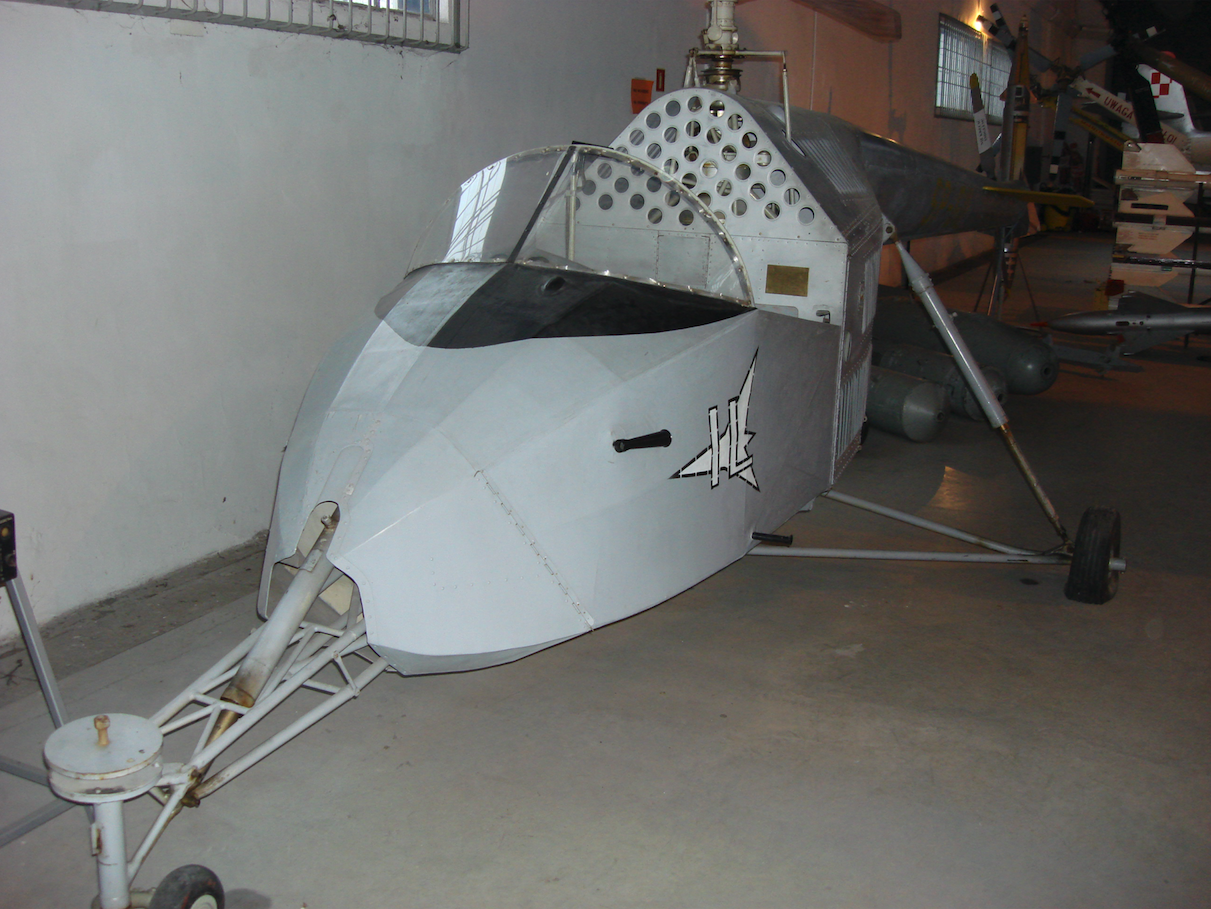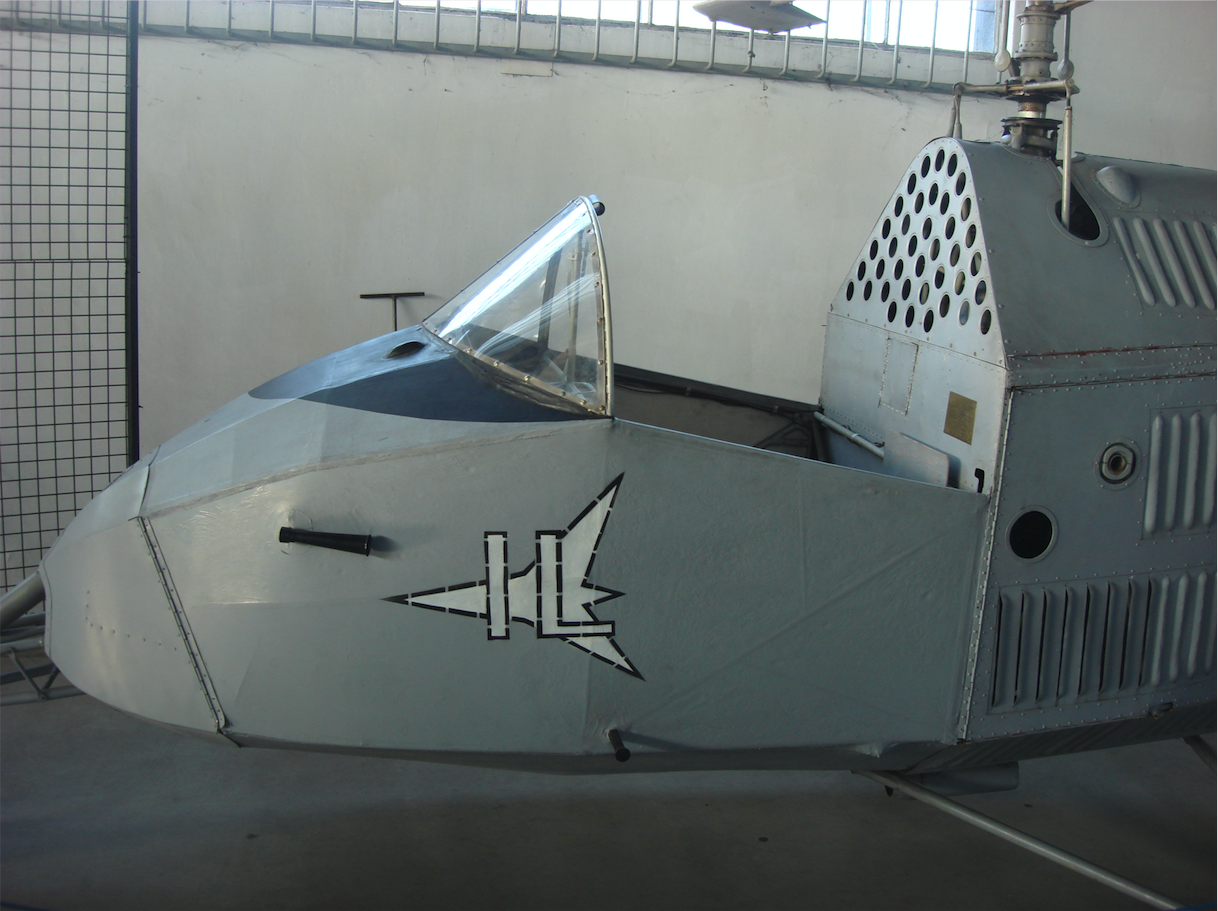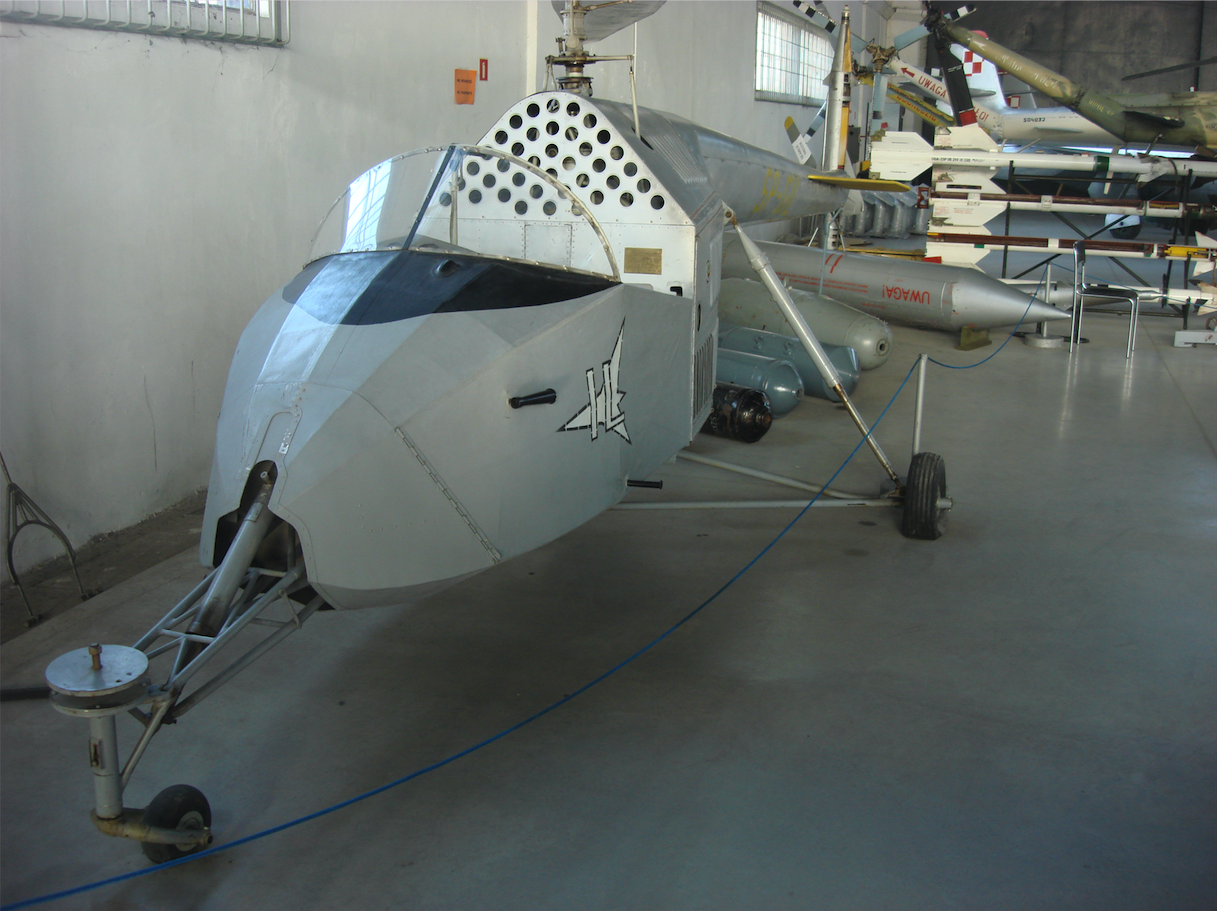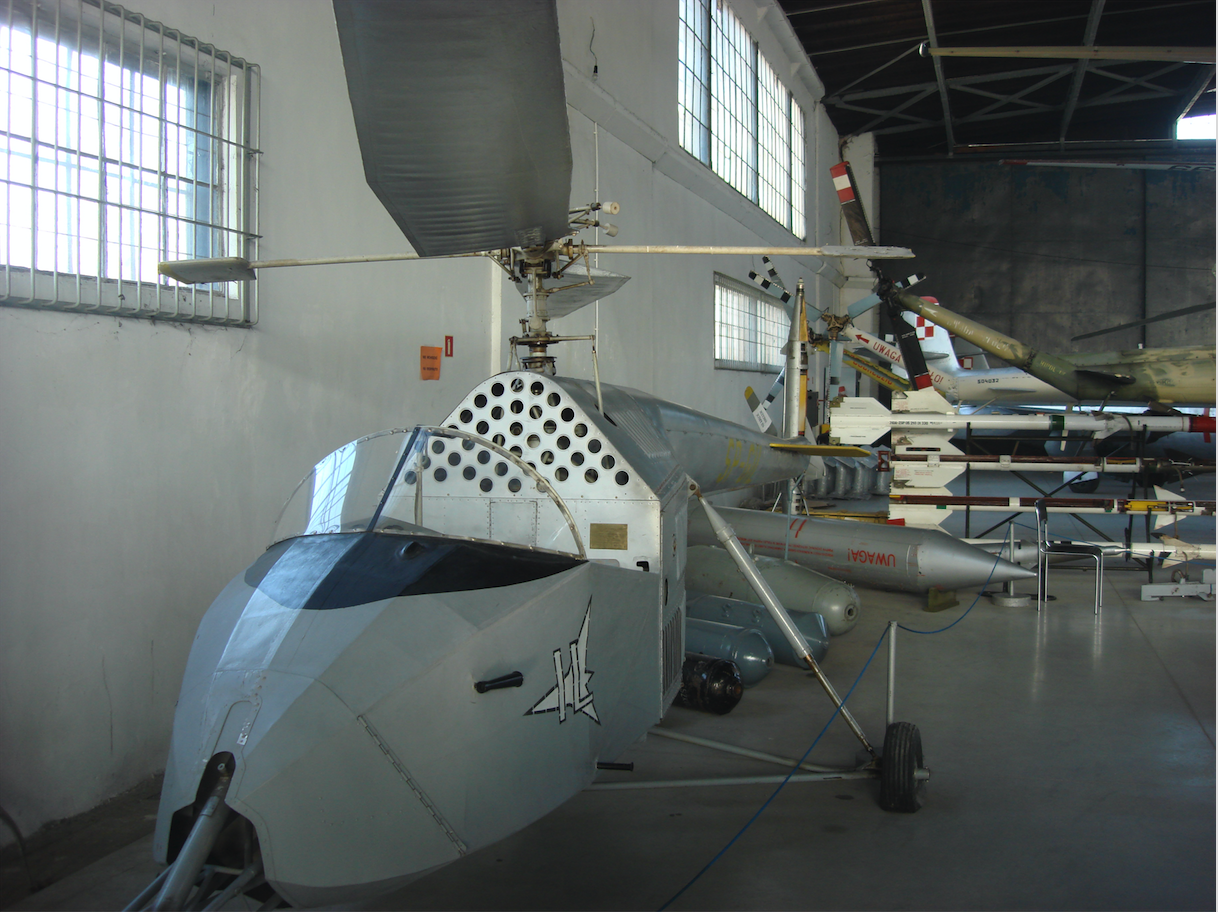Kraków 2018-09-11
Główny Instytut Lotnictwa SP-GIL (BŻ-1 GIL).
080b section 4-04-1950 year.
Poland.
Construction history.
The GIL helicopter was the first experimental Polish helicopter. In 1948, the idea of building a helicopter was put forward by Dr. Engineer Zbigniew Brzoska, who was the head of the strength and aerodynamics department at the Central Aviation Institute in Warsaw. The program did not start immediately. It was believed that the construction of a helicopter was a luxury that our country could not afford after the war damage. It was proposed to rebuild classical aviation.
However, the proposal of Dr. Engineer Zbigniew Brzoska was not bad. The new aviation technique, in the form of helicopters, has already been used in the USA. After World War II, helicopters were built in France, UK and CCCP. However, the director of the Central Institute of Aviation, Professor Doctor of Engineering Władysław Fiszdon convinced the party and state authorities, which allowed the program to start.
The helicopter program was a novelty for Polish designers, who first got acquainted with the theory of helicopter flight. Zbigniew Brzoski recruited the following constructors to the team: Bronisław Żurakowski, Tadeusz Chyliński, Zdzisław Brodzki, and Jan Kornfeld-Kornacki.
A 4-cylinder in-line Hirth HM 504 A2 engine was used for the drive. This and many other engines were left by the Germans when they left Warsaw on January 17, 1945. The engine was rebuilt by engineer Zbigniew Brzoska so that the engine could run in a vertical position. It was all about proper lubrication. The engineers built: the main planetary gearbox, the cooling fan and the outlet for the tail rotor. The tail rotor was driven by a gearbox from a Zundapp motorcycle. The wheels for the helicopter landing gear were taken from the Kranich glider launch cart. Bronisław Żurakowski developed the main rotor for the helicopter, modeled on the Hiller type system, called the swing rotor. The rotor system of the Ciervy type was beyond the technical capabilities of Poland at that time.
The helicopter prototype was built throughout 1949. It was built by several technicians, among them: Srebrzyński, Rygalski, Tałałaj. On January 14, 1950, the helicopter was ready for testing. But then the weather was bad. It was cold and a strong wind was blowing. Before take-off was attempted, the helicopter overturned. The tests were discontinued and the helicopter returned to the workshop.
The SP-GIL helicopter made its first flight on April 4, 1950. Since no pilot in Poland had a license to pilot helicopters, Bronisław Żurakowski was at the helm. During the flight, the pilot was insured by colleagues.
On April 5, 1950, three more flights of this type were made. During the fifth flight, the helicopter climbed high enough that the colleagues let go of the helicopter. The pilot failed to control the machine and it was damaged. The repair took five weeks.
The helicopter made several more successful flights. The helicopter underwent several modifications. The main rotor has been modernized. The chassis was rebuilt. Pilot Wiktor Pełka, who was an experimental pilot of aircraft, also participated in the flights. Wiktor Pelka was the captain of LOT Polish Airlines. While in the West, he took some lessons in helicopter piloting.
The helicopter crashed several times. Nevertheless, after each repair and modification, the structure was more mature. On November 14, 1951, the SP-GIL helicopter was officially shown to the government administration. In the summer of 1952, the helicopter was inspected by the commander of the Polish Air Force, Soviet General Iwan Turkiel. On July 22, 1952, the helicopter was shown in flight to the inhabitants of Warsaw at Okęcie. It was the first public demonstration of the helicopter in the Socialist Countries, outside the CCCP.
On November 16, 1953, the helicopter was damaged during the training of a new test pilot, Andrzej Abłamowicz. The helicopter’s main rotor blade cut off its tail boom. The helicopter was repaired, but was not allowed to fly. The helicopter was presented at exhibitions. For example, in front of the Arsenal in Warsaw. In the summer of 1954, the helicopter was placed in a corner of the hangar. Documentation and flight test reports were destroyed.
Until then, the SP-GIL helicopter made 169 flights (take-offs) in 20 hours and 21 minutes.
In December 1956, the SP-GIL helicopter was overhauled on the initiative of two pilots, Ryszard Witkowski and Ryszard Śmigiel. It was stripped down to the last part. In accordance with the recommendation of the post-accident commission in 1953, the tail boom was lowered by 10 cm. Broken parts replaced or repaired. On November 8, 1956, Wiktor Pełka took off in a helicopter.
After the reconstruction of the helicopter, further flights (185) were made in 12 hours and 38 minutes. SP-GIL was piloted by: Wiktor Pełka, Ryszard Witkowski, Antoni Śmigiel, Andrzej Abłamowicz. On December 29, 1956, there was a passenger on board during one of the flights. Then there were a few more flights with a passenger.
On February 8, 1957, while starting the engine, the tail rotor gearbox from the Zundapp motorcycle was damaged. The engineers decided to hand over the helicopter for museum purposes. In 1960, it was removed from the register of aircraft. For several years, SP-GIL stood at the entrance to the NOT (Naczelna Organizacja Techniczna) Museum of Technology. In 1974, the helicopter was transferred to the Museum of Aviation and Astronautics in Krakow. Currently, it is the Polish Aviation Museum.
Officially, the helicopter was marked SP-GIL and had such a registration. GIL does not mean the name of the bird, but the Central Aviation Institute. At the end of the 50 years, the helicopter began to be called BŻ-1 after one of the designers, Bronisław Żurakowski. In 1989, the SP-GIL helicopter was renovated.
Helicopter design.
SP-GIL is a two-seater helicopter in a classic layout. Two-bladed rotor. The shovels had a wooden structure covered with plywood. The fuselage structure in the cabin and engine parts was a spatial truss made of steel tubes, while the tail boom was a plywood tube. Open cabin with front windshield. The two-bladed tail rotor had multi-layer wood blades. Three-support chassis with front wheel, fixed.
A 4-cylinder in-line Hirth HM 504 A2 engine with a nominal power of 105 HP was used for the drive. The SP-GIL helicopter never caught fire, which was, for example, a big problem for aircraft before the Second World War. The designers have successfully moved the exhaust pipe away from the fuel system.
T-T data of the SP-GIL helicopter:
Length 8.50 m. Height 3.00 m. Rotor diameter 8.80 m. Curb weight 510 kg. Payload 100 kg. Take-off weight 610 kg. Cruising speed 80 km/h. Climb speed 2.5 – 4.5 m/s. Ceiling 2,000 m.
Tally.
Only one SP-GIL prototype was built, which can be seen at the Polish Aviation Museum in Krakow.
Written by Karol Placha Hetman





